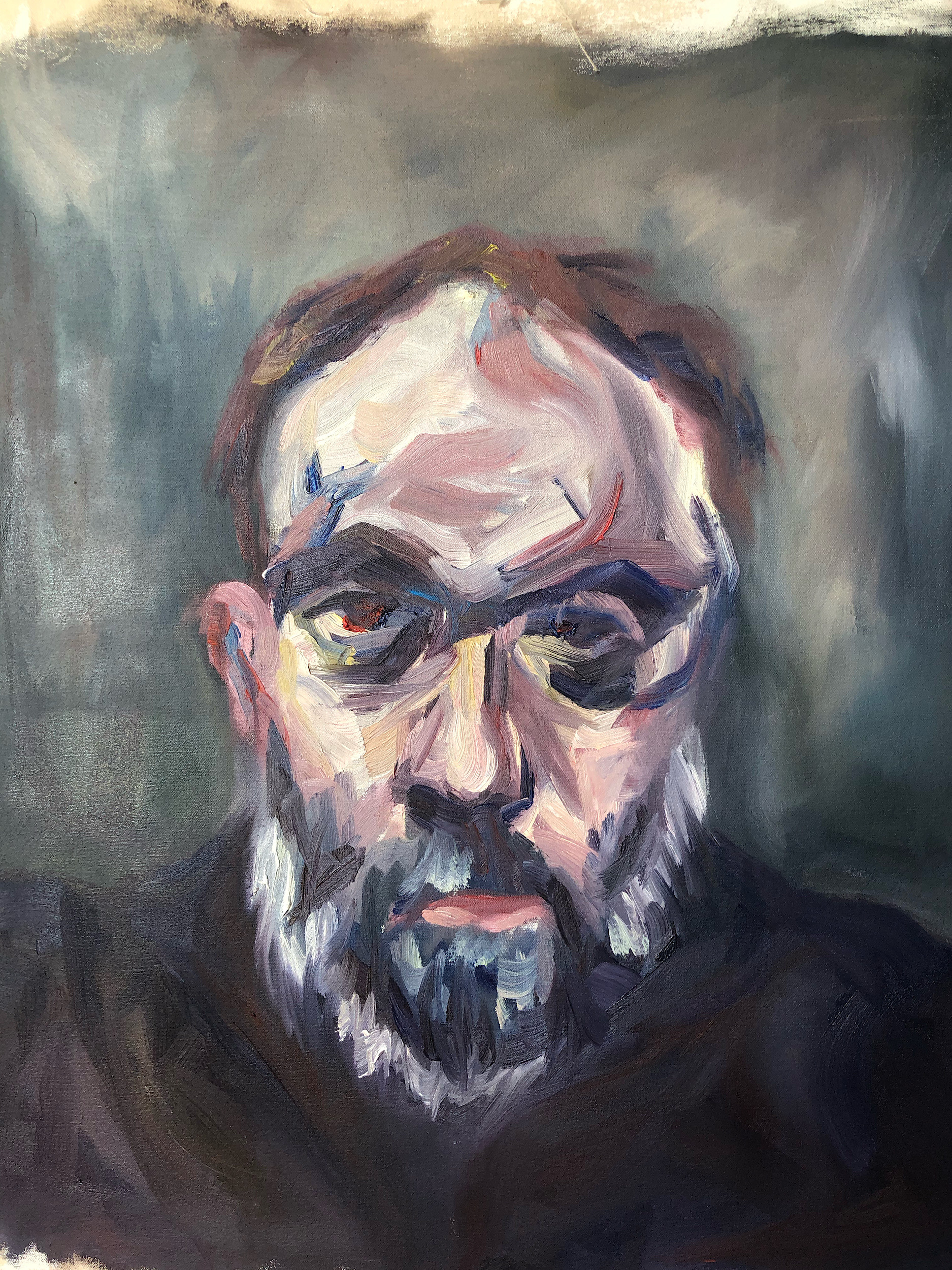
Oil on canvas, Development
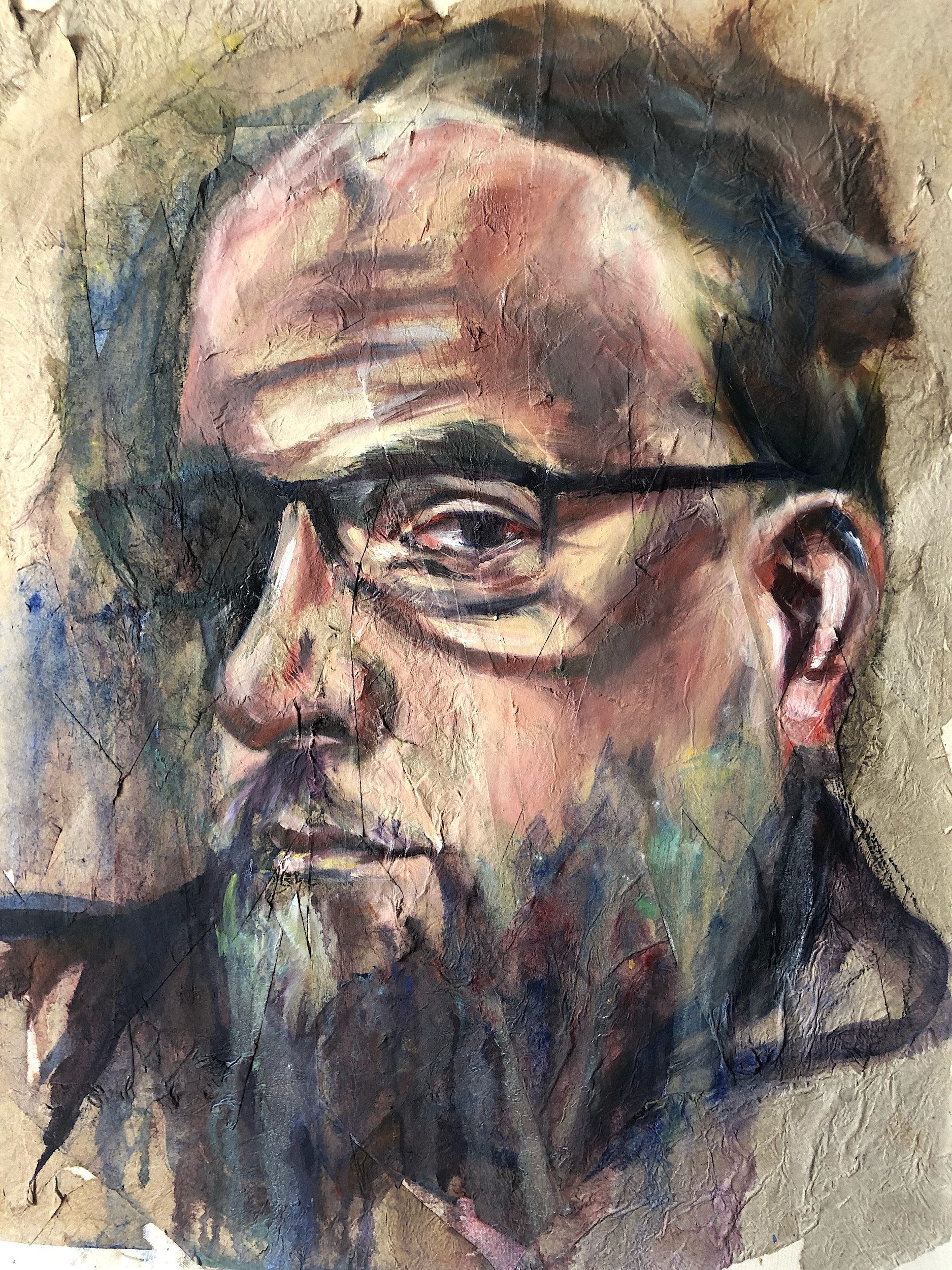
Oil on canvas, finger painting. Experimentation
What do masks reveal? Researching artists such as James Ensor, Michael Börremans and reading essays from ‘Beyond Piety’ - led me to question the extent to which our face can become a mask. I first decided to film myself gradually adding clay to my face to mimic the idea that, as we get older, the mask we build for ourselves can gradually take over. The clay mask was quite a literal transposition of the use of masks in Ancient Greek theater. It was suggested that masks deprived actors of facial expressions, meaning that actors were more challenged when portraying their character’s feelings and therefore had to heighten aspects of human expression through intonations, movements, etc.
I decided to see how covering up certain parts of my face would perhaps enhance others, especially when painting. I then wanted to further explore aspects of theater through Lino cutting. With a mask usually comes a role, and I became quite interested in gender roles and domesticity. Being confined meant that my perspective was very much turned inwards, towards family life, particularly the roles played by my parents - the subjects of my Lino print.
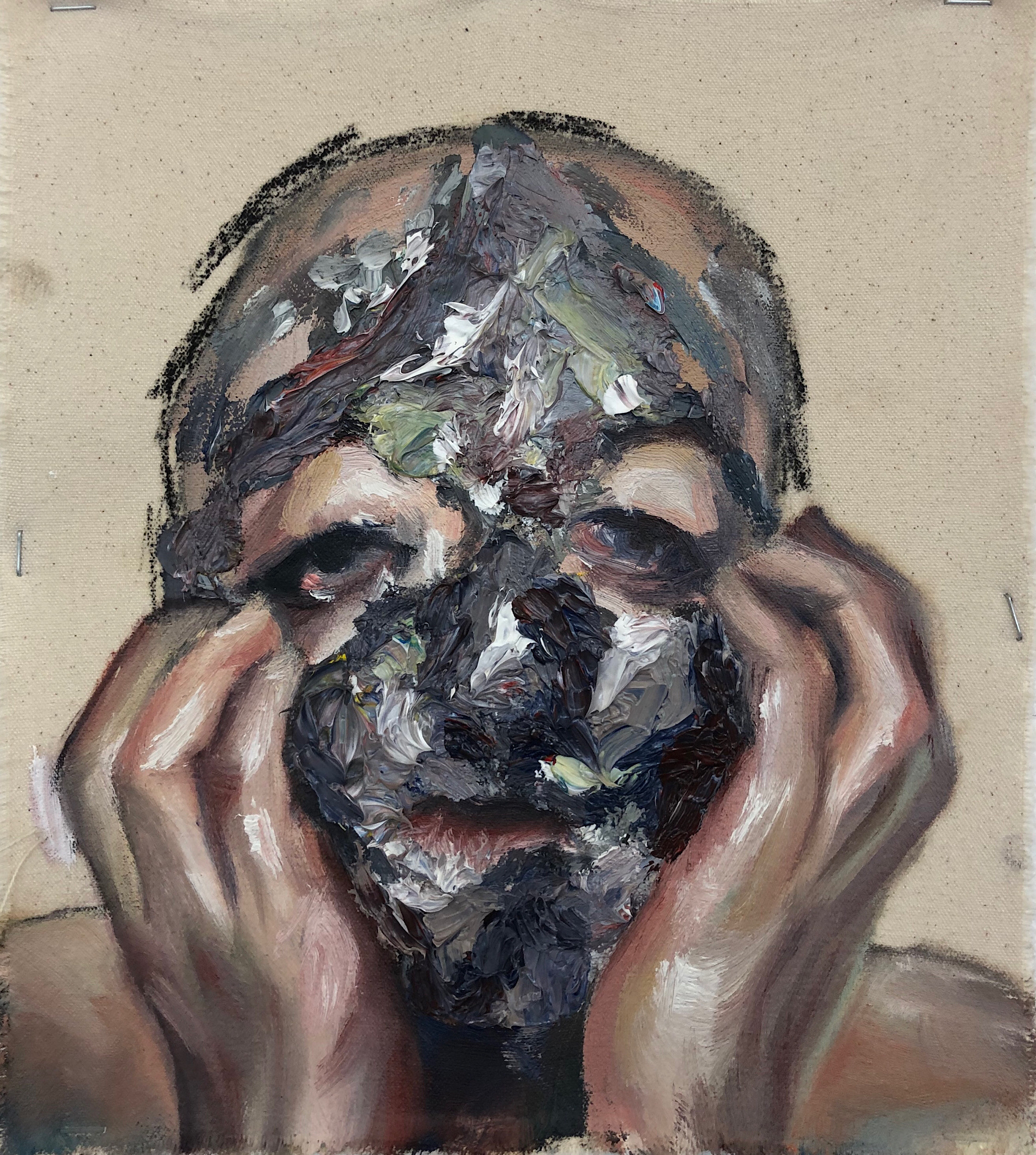
Oil on canvas
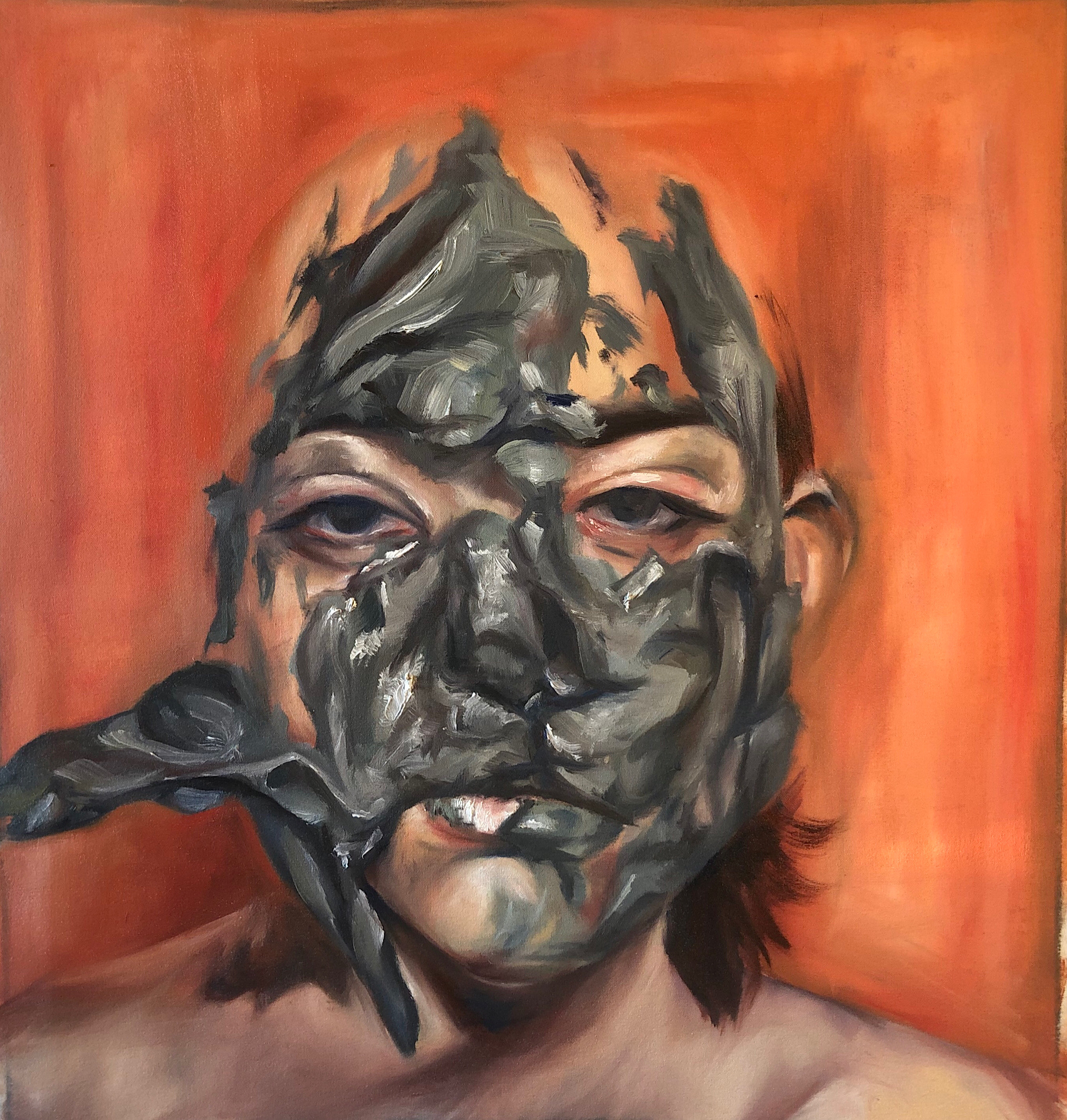
Watercolour on paper. Experimentation
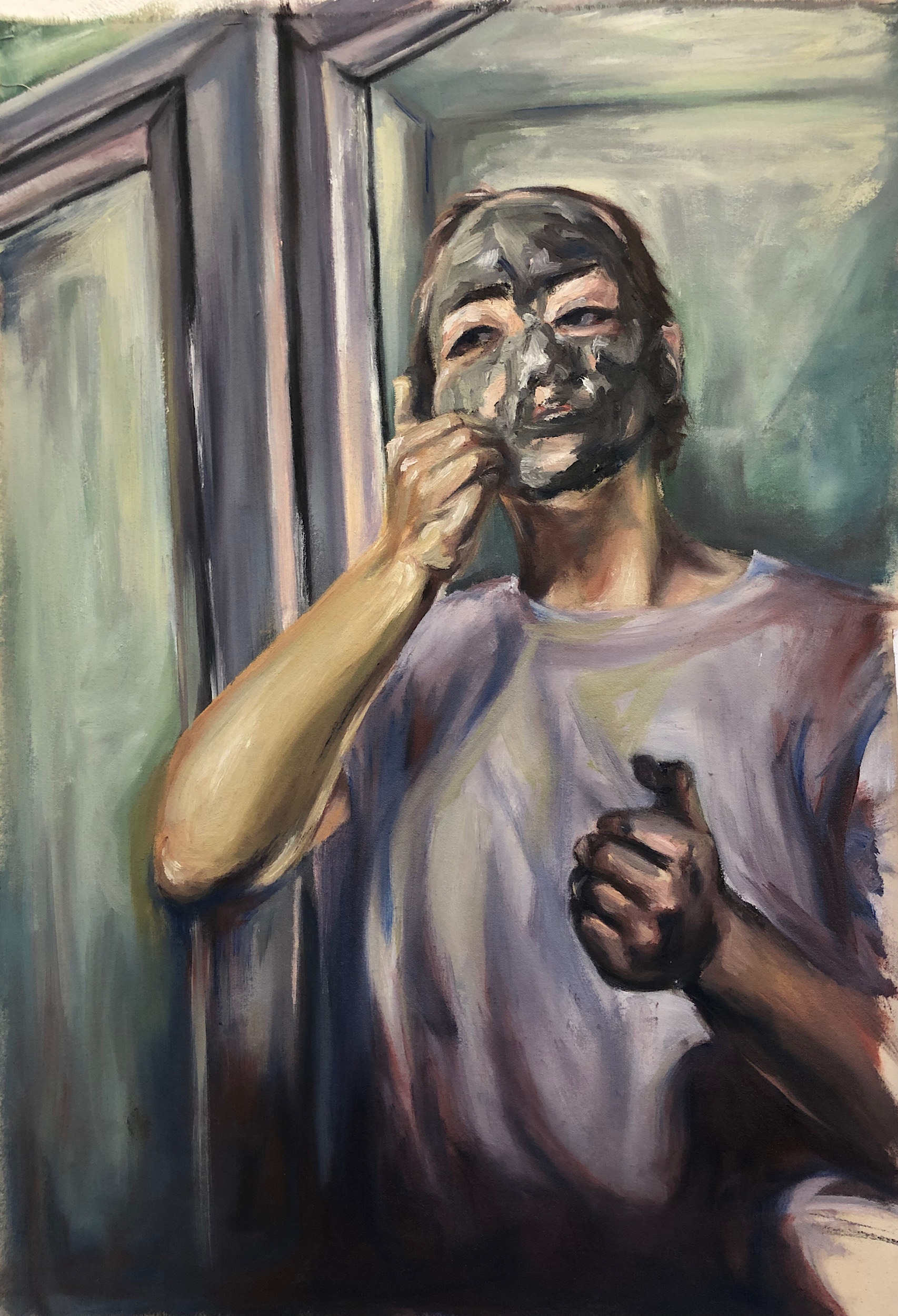
Watercolour on paper. Experimentation
I wanted to create a theatrical scene, using light as a tool to depict the roles in their relationship. But being disappointed with the outcome, I moved on to a more subtle and personal portrayal of my dad’s ‘mask’, which seems to come up and down dramatically. I wanted to suggest the uncertain nature of our ‘masks’ with more watery paint. Contrastingly, I wanted to explore how viscosity of paint and less control would alter the portrayal of his mask. I felt that I lost the power of his gaze in this painting, which led me to realize that what seemed to betray us when putting up our ‘masks’ is the gaze - which has been a focal point throughout my project.
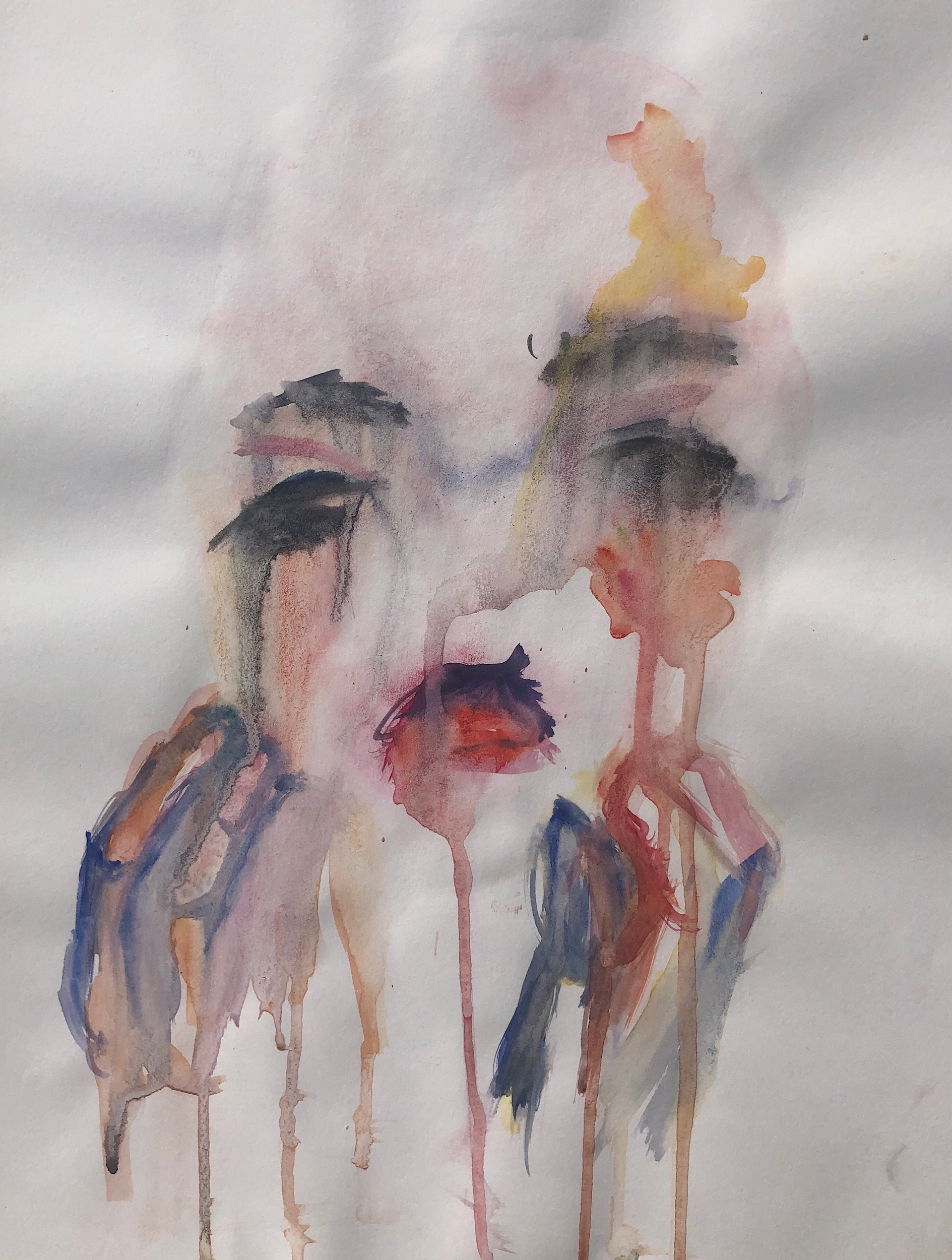
Oil on toilet paper roll
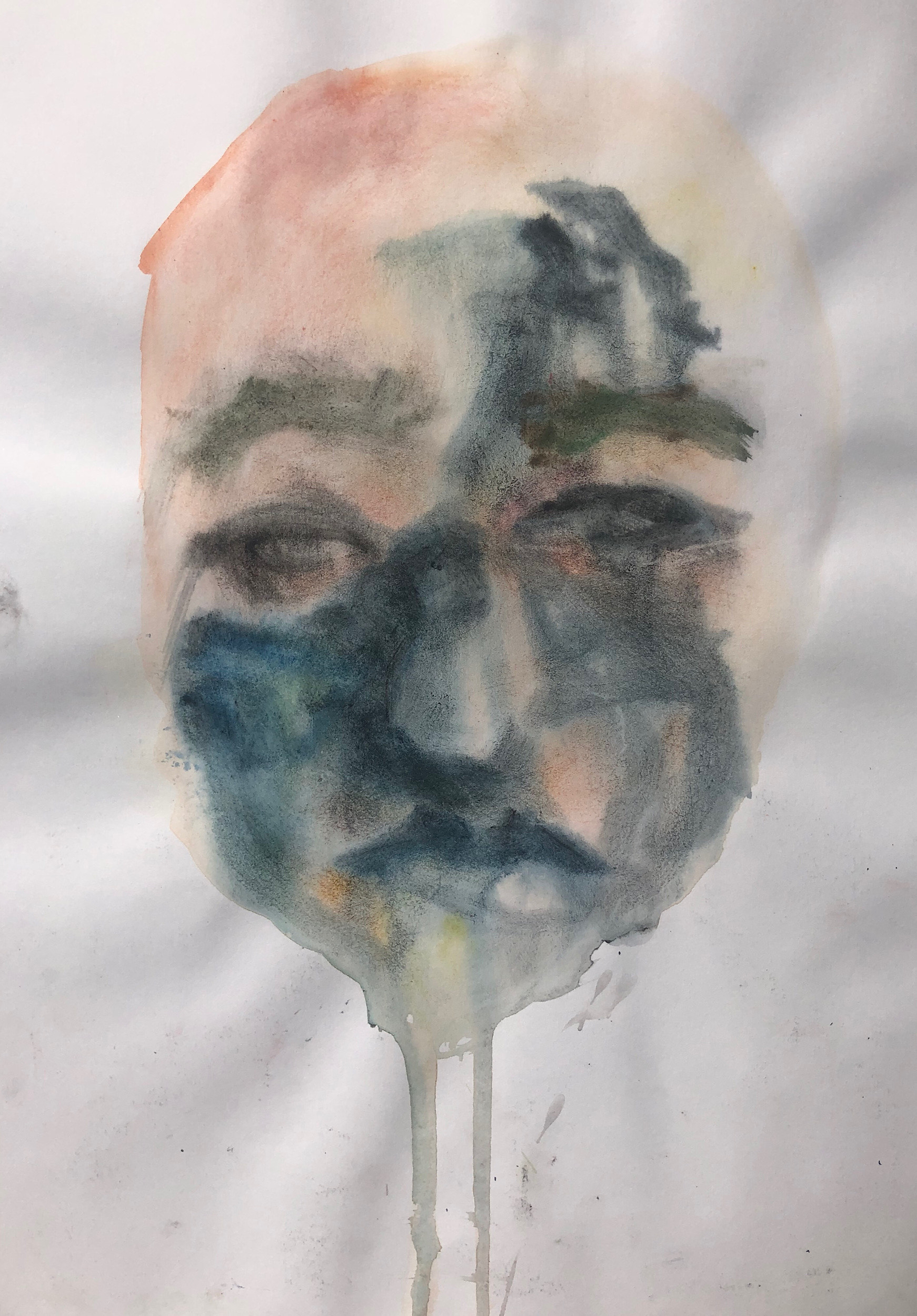
Oil on canvas

Oil on canvas, Development

Oil on canvas, finger painting. Experimentation
What do masks reveal? Researching artists such as James Ensor, Michael Börremans and reading essays from ‘Beyond Piety’ - led me to question the extent to which our face can become a mask. I first decided to film myself gradually adding clay to my face to mimic the idea that, as we get older, the mask we build for ourselves can gradually take over. The clay mask was quite a literal transposition of the use of masks in Ancient Greek theater. It was suggested that masks deprived actors of facial expressions, meaning that actors were more challenged when portraying their character’s feelings and therefore had to heighten aspects of human expression through intonations, movements, etc.
I decided to see how covering up certain parts of my face would perhaps enhance others, especially when painting. I then wanted to further explore aspects of theater through Lino cutting. With a mask usually comes a role, and I became quite interested in gender roles and domesticity. Being confined meant that my perspective was very much turned inwards, towards family life, particularly the roles played by my parents - the subjects of my Lino print.

Oil on canvas

Watercolour on paper. Experimentation

Watercolour on paper. Experimentation
I wanted to create a theatrical scene, using light as a tool to depict the roles in their relationship. But being disappointed with the outcome, I moved on to a more subtle and personal portrayal of my dad’s ‘mask’, which seems to come up and down dramatically. I wanted to suggest the uncertain nature of our ‘masks’ with more watery paint. Contrastingly, I wanted to explore how viscosity of paint and less control would alter the portrayal of his mask. I felt that I lost the power of his gaze in this painting, which led me to realize that what seemed to betray us when putting up our ‘masks’ is the gaze - which has been a focal point throughout my project.

Oil on toilet paper roll

Oil on canvas
